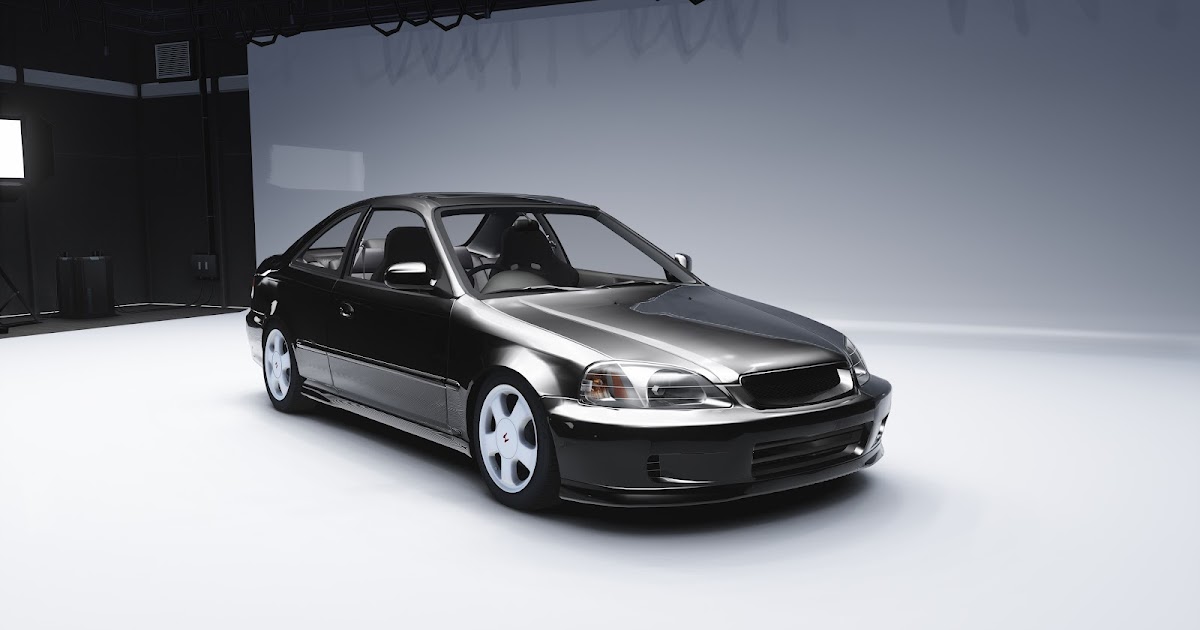Honda’s VTEC (Variable Valve Timing and Lift Electronic Control) system has long been celebrated as one of the most innovative technologies in modern engine design.
First introduced in the late 1980s, VTEC quickly became synonymous with high-revving, fuel-efficient engines that delivered surprising performance without sacrificing reliability.
From the screaming B16s of the ‘90s to the more refined K-series engines of the 2000s and beyond, Honda built a reputation around engines that could take a beating and just keep going. Whether in a stripped-down Civic hatch or a luxury Acura sedan, the right VTEC engine could turn an everyday car into something truly special.
But here’s the reality — not every VTEC engine lives up to the hype. While many have become known for their bulletproof construction and long-term reliability, others have developed a reputation for early wear, oil consumption, and mechanical gremlins that show up far too soon.
Some engines were let down by weak components, poor maintenance tolerance, or simply didn’t age as well as their predecessors. The truth is, VTEC isn’t a magic spell — it’s just one piece of the engineering puzzle. And when the rest of the engine doesn’t hold up, all the variable valve timing in the world won’t save it.
VTEC Engines That Keep Going
In this article, we’ll cut through the nostalgia and nameplates to give you a clear, honest look at ten notable VTEC engines. Five of these are proven long-haulers — motors known to push 200,000+ miles with minimal fuss — while five others have gained notoriety for wearing out faster than expected, whether due to poor design, neglected maintenance, or simply being overhyped from day one.
Whether you’re looking for your next reliable project build, daily driver, or trying to avoid a costly mistake, this list will give you the insight you need to separate the VTEC legends from the letdowns. Let’s dive in.
1. B18C1 (Acura Integra GS-R)
Years: 1994–2001
Displacement: 1.8L DOHC VTEC
The B18C1 is one of Honda’s most beloved VTEC engines. Built with a forged crankshaft, high-flow head, and strong internals, it was made to rev.
With proper maintenance and regular oil changes, these engines can exceed 300,000 miles with ease. The VTEC engagement is both reliable and exhilarating, and the aftermarket support ensures longevity through upgrades or replacements.
The Honda B18C1 engine is a highly sought-after and respected powerplant among car enthusiasts and performance tuners alike. This 1.8-liter, 4-cylinder engine was manufactured by Honda specifically for the Acura Integra GS-R.
Renowned for its high-revving nature and ability to produce impressive horsepower for its size, the B18C1 has earned a loyal following among those who appreciate responsive, naturally aspirated performance.
Understanding engine specifications is essential for both car enthusiasts and potential buyers. These details help individuals make informed decisions, whether they’re in the market for a new vehicle or considering performance upgrades. Knowing the capabilities of a specific engine allows enthusiasts to maximize its potential through smart modifications and proper tuning.
The primary goal of this blog post is to provide a comprehensive review of the Honda B18C1 engine. We will break down its specifications, performance characteristics, and common applications.
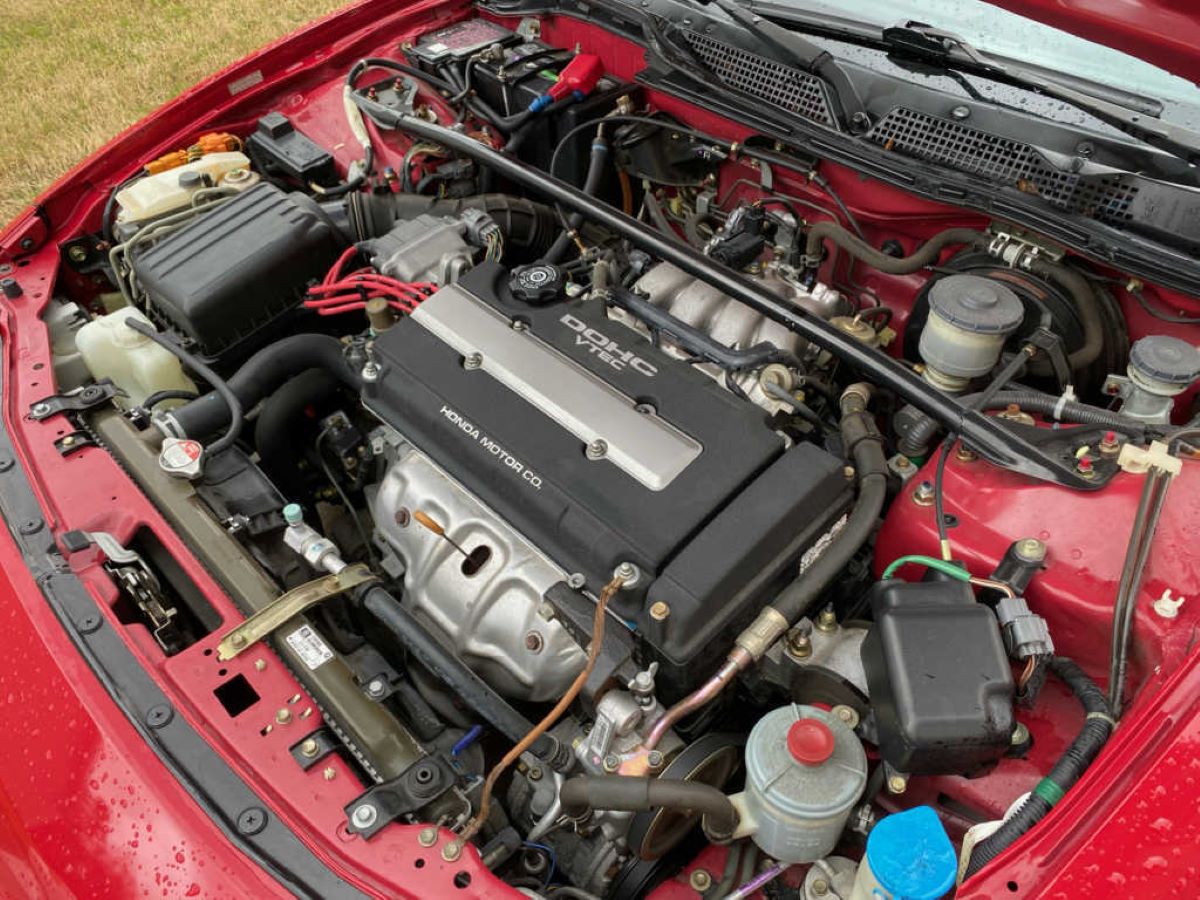
Additionally, we’ll offer comparisons with other engines to highlight what makes the B18C1 unique. By the end of this article, you’ll gain a deeper understanding of the B18C1’s strengths and why it remains a favorite in the Honda performance scene.
The Honda B18C1 engine was produced from 1994 to 2001 and is prized for its powerful output and rev-happy nature. It features a DOHC VTEC design and a compression ratio of 10.0:1, making it a standout option for anyone seeking a blend of power and reliability.
With a bore size of 81 mm and a stroke length of 87.2 mm, the engine offers a rod length of 137.9 mm and a rod-to-stroke ratio of 1.60. These internal specs, combined with VTEC engagement at 4,400 RPM and a redline of 8,100 RPM, allow the B18C1 to generate 170 horsepower and 128 lb-ft of torque — impressive figures for a naturally aspirated 1.8-liter.
Adding to its performance profile, the B18C1 is equipped with secondary runners that activate at 5,750 RPM to further enhance airflow and power output.
This thoughtful design contributes to the engine’s popularity in both racing and high-performance street builds. Known for its durability, the B18C1 uses the P72 ECU and is highly modifiable, offering plenty of room for tuning and aftermarket upgrades.
In summary, the Honda B18C1 engine is an iconic part of Honda’s performance legacy. With its high-revving nature, strong output, and tuning potential, it’s no surprise that this engine remains a top choice for car enthusiasts seeking both reliability and spirited performance. Whether you’re building a track car or just want a robust engine for your daily driver, the B18C1 is a platform worth serious consideration.
Also Read: Top 10 Most Reliable Used Cars You Can Buy for Under $10,000 in 2025
2. K20A (JDM Civic Type R, RSX Type S)
Years: 2001–2006
Displacement: 2.0L DOHC i-VTEC
The K20A is revered for its blend of power, efficiency, and reliability. With its roller rocker arms, forged internals, and oil squirters, it’s built for endurance.
These engines often run well past 250,000 miles without serious issues, making them a go-to for engine swaps and performance builds.
The K20 is a 2.0-liter inline four-cylinder gasoline engine that was first introduced in 2001, developed with the goal of replacing similar engines from the B- and F-series lineups, such as the B20B(Z) and the F20B(A). The broader Honda K-series also includes the larger 2.3L K23 and 2.4L K24 variants.
Like many of Honda’s engine families, the K20 series comes in a wide array of versions, each tailored with its own distinct features and applications. In this article, we’ll explore the different variants of the K20 and highlight the key differences that set them apart.
The K20 series made its debut with the K20A1 in the JDM Honda Stream at the end of 2000. It featured an aluminum cylinder block paired with cast iron sleeves—similar in construction to the B- and F-series blocks.

The block’s deck height measures 212 mm. Notably, the K20 is a square engine, meaning its bore and stroke are nearly identical at around 86 mm. Topping the engine is a lightweight 16-valve aluminum cylinder head, which uses chain-driven double overhead camshafts (DOHC) and integrates Honda’s i-VTEC system.
The intake valves are 35 mm in diameter while the exhaust valves measure 30 mm, with slim 5.5 mm valve stems. The K20A1 uses a reliable timing chain and actuates its valves via roller rocker arms. Unlike some modern engines, it does not feature an automatic hydraulic valve clearance system, requiring manual valve adjustments every 24,000 miles.
Like all K20 engines, it employs a coil-on-plug, distributorless ignition system and an advanced electronic port fuel injection system. The K20A1’s compression ratio stands at 9.7:1, with a slightly higher 9.8:1 used in all-wheel-drive applications.
The K20A3 closely mirrors the K20A1 but has notable differences in its VTEC system. This variant is found in the 2002–2006 Acura RSX and 2002–2005 Honda Civic Si.
It includes VTEC activation on the intake cam only, omitting the system on the exhaust camshaft. The design was meant to prioritize emissions reduction and fuel economy. VTEC engagement occurs at 2,200 RPM. This engine version came with 270 cc fuel injectors and a dual-runner intake manifold, maintaining a compression ratio of 9.8:1.
The K20A4 is essentially a K20A3 re-tuned for use in USDM models like the 2003–2007 Honda Accord and 2002–2006 Honda CR-V. Similarly, the K20A6 is a variant of the K20A3 designed for the European and Australian markets, specifically used in the 2003–2006 Honda Accord.
On the high-performance end of the spectrum, the K20A is a JDM-exclusive engine produced from 2001 to 2011. It includes several performance-oriented upgrades, such as balancing shafts, high-compression pistons rated at 11.5:1, reinforced connecting rods, a lightened flywheel, and dual valve springs in the valvetrain.
The K20A is also equipped with 310 cc fuel injectors, a 4-2-1 exhaust manifold (header), and a PRC intake manifold—though the Euro R variant uses the RBC manifold. One standout feature of this engine is its factory-ported cylinder head, enhancing airflow and combustion efficiency. T
he camshaft specs for this engine vary depending on the trim, with intake/exhaust durations and valve lifts measured at 244/240 degrees and 8.84/8.59 mm; 280/278 degrees and 12.65/12.14 mm; and 245/244 degrees and 9.68/8.74 mm. The intake system includes a 62 mm throttle body, with the i-VTEC system activating at 6,000 RPM.
3. D16Y8 (Civic EX/Si)
Years: 1996–2000
Displacement: 1.6L SOHC VTEC
Though not the most powerful, the D16Y8 is incredibly reliable and easy to maintain. Its simple single-cam design makes it less prone to timing issues, and it thrives on routine maintenance.
Many owners report D16s going well beyond 300,000 miles, often on the original internals. The Honda D16Y8 engine is a 1.6-liter inline-four that features a bore and stroke of 81 mm by 77.4 mm. It has a redline of 6,800 rpm and a rev limit of 7,200 rpm, making it a capable high-revving engine within the D-series lineup.
The engine’s ECU code is P2P, which matches its piston code, and it operates with OBD2-b fuel control. VTEC engagement occurs at 5,600 rpm, giving the engine improved power delivery and fuel efficiency when it switches over to its performance cam profile.
In terms of output, the D16Y8 produces 127 horsepower (95 kW) at 6,600 rpm and 107 lb-ft (145 N⋅m) of torque at 5,500 rpm. It has a compression ratio of 9.6:1, which contributes to its efficiency and responsiveness.
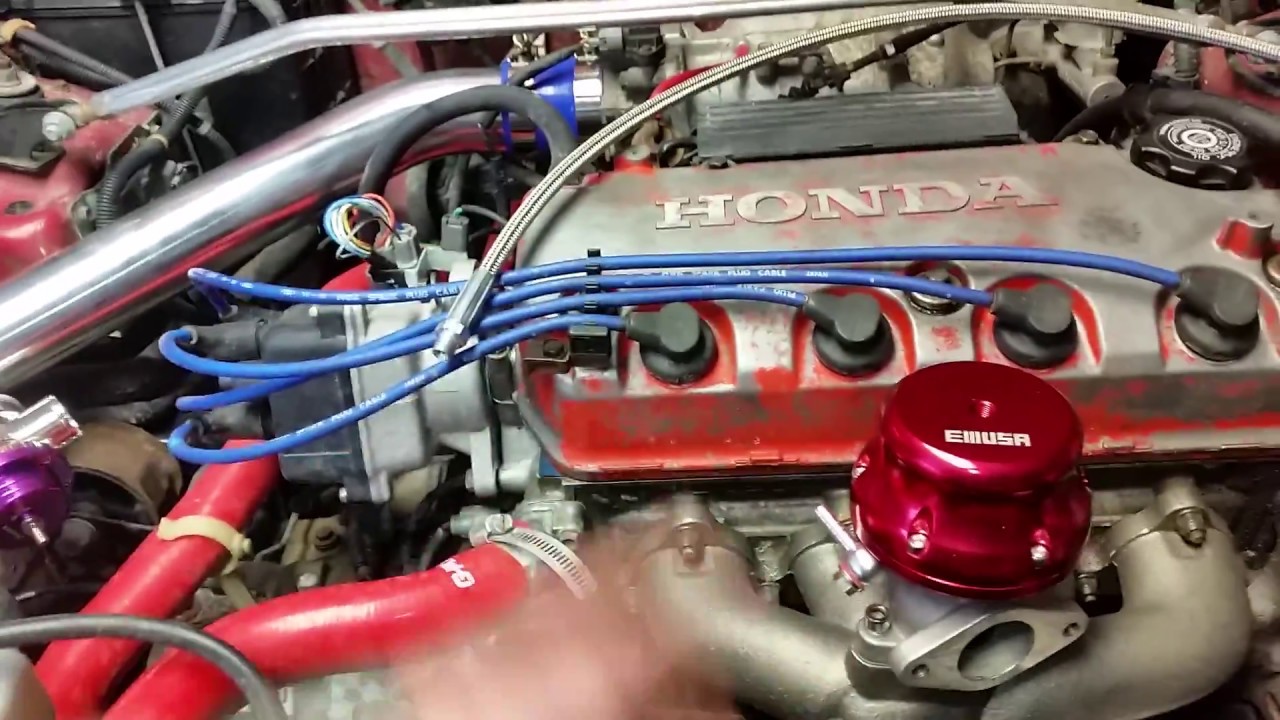
Structurally, the engine features a deck height of 8.347 inches and a connecting rod length of 5.394 inches, which are typical proportions for a naturally aspirated engine in this displacement range. These physical and performance characteristics make it a popular choice for those seeking a solid balance between power and economy.
When compared to other D16 engines, the D16Y8 stands out for its performance gains and overall refinement. Relative to the D16Y6, for example, the Y8 boasts a higher redline, a more advanced fuel control system, and a more effective VTEC setup.
These upgrades result in noticeably better horsepower and torque numbers, as well as improved throttle response and fuel economy. The engine also benefits from a higher compression ratio, further enhancing its efficiency and output.
The D16Y8 is regarded as one of the more powerful and efficient variants within the D16 family. It is also emissions-compliant thanks to its OBD2 system, which makes it a practical yet sporty option for daily drivers and enthusiasts alike.
However, availability varied by region; while the D16Y8 was offered in many markets, some regions only received the D16Y6, making the Y8 a more desirable engine in certain areas.
Overall, the Honda D16Y8 has earned its reputation as an excellent choice for those looking to upgrade or maintain a Honda or Acura with a reliable, efficient, and high-revving engine. Its blend of performance, compliance, and tunability makes it a favorite among both budget-conscious tuners and long-time Honda enthusiasts.
Also Read: 5 Trucks With the Best Storage Under Seats and 5 Wasting Space
4. F20C (S2000)
Years: 2000–2003 (U.S.), through 2009 (Japan)
Displacement: 2.0L DOHC VTEC
One of the highest-revving production engines ever made, the F20C is also remarkably durable. Built with a forged crank, robust rods, and an 11.0:1 compression ratio, it was engineered for 9,000+ RPM.
Despite its aggressive nature, it’s known to run strong for over 200,000 miles with proper care.
Despite being devoted drifting enthusiasts, we’ve always had a deep respect for the remarkable engines that Honda has developed over the years. When the F20C debuted in 2000, we were thrilled to see Honda finally deliver an exciting new front-engine, rear-wheel-drive (FR) platform — and it certainly lived up to expectations.
The moment we saw that Honda had paired rear-wheel drive (sorry, FWD fans!) with VTEC and a screaming 9,000 RPM redline, it was clear that something special had arrived. Until the launch of the Ferrari 458 Italia in 2010, the F20C held the record for the highest specific power output from a naturally aspirated production engine for an entire decade.
The F20C’s output of 123.5 horsepower per liter only narrowly trails the Ferrari 458 Italia’s 124.5 HP/L, and we’re confident most would agree that the F20C still delivers a far better value in terms of performance per dollar. That’s even before factoring in the incredible aftermarket support available for tuning this engine to new heights.
While the F20C looked amazing on paper, we admittedly underestimated just how extraordinary this high-revving inline-four would prove to be in real-world applications. That’s exactly why we’ve put together this comprehensive guide — to break down everything you need to know about the legendary Honda F20C.

Honda has long been known for building incredibly reliable engines, many of which offer some of the most impressive tuning potential in the industry. However, the company isn’t typically recognized for crafting longitudinal engines tailored for rear-wheel-drive vehicles. This makes the F20C stand out even more as a unique and innovative design in Honda’s engine lineup.
Though it’s technically a distant cousin of earlier F-series engines like the F20A, F20B, and F20Z, many enthusiasts argue that the F20C shares more characteristics with the performance-focused K20A.
That said, Honda developed the F20C almost entirely from the ground up. It features a newly engineered aluminum block and numerous components that were hand-assembled — a process that adds to its craftsmanship and appeal, as seen in various in-depth factory documentaries.
Japanese domestic market (JDM) versions of the F20C came equipped with a high 11.7:1 compression ratio, while North American and European versions still received a very respectable 11.0:1. Both configurations utilized forged pistons and 153 mm lightweight connecting rods, ensuring durability under high RPM conditions.
Because of these variations, power output differed slightly across markets. The JDM version produced 247 horsepower in stock form, while the North American and European models came in slightly lower at 234 horsepower.
Nonetheless, both variants offered exhilarating performance and solidified the F20C as one of the most iconic naturally aspirated four-cylinder engines ever made.
5. K24A2 (Acura TSX)
Years: 2004–2008
Displacement: 2.4L DOHC i-VTEC
The K24A2 combines torque with high-end VTEC power. It features strengthened internals compared to other K24 variants and has proven to be one of Honda’s most versatile and reliable powerplants.
These engines are often used in swaps due to their durability and potential for performance tuning. The Honda K24A2 engine is a 2.4-liter inline-four powerplant developed by Honda Motor Company. Initially introduced in the 2004 Acura TSX, this engine has been featured in multiple Honda models over the years.
It has earned a solid reputation for delivering an ideal combination of power and efficiency, making it a favorite among both performance enthusiasts and everyday drivers.
This blog post aims to provide a detailed and comprehensive breakdown of the Honda K24A2 engine, which belongs to the broader K24 engine family. We’ll cover its core specifications and performance data, including compression ratio, power and torque outputs, RPM thresholds, and other defining characteristics.
The Honda K24A2 is a 2.4-liter, four-cylinder engine that made its debut in the 2004 Acura TSX. Designed to strike a balance between performance and fuel efficiency, the K24A2 has also seen use in a number of other Honda models such as the CR-V, Civic Si, and Element.
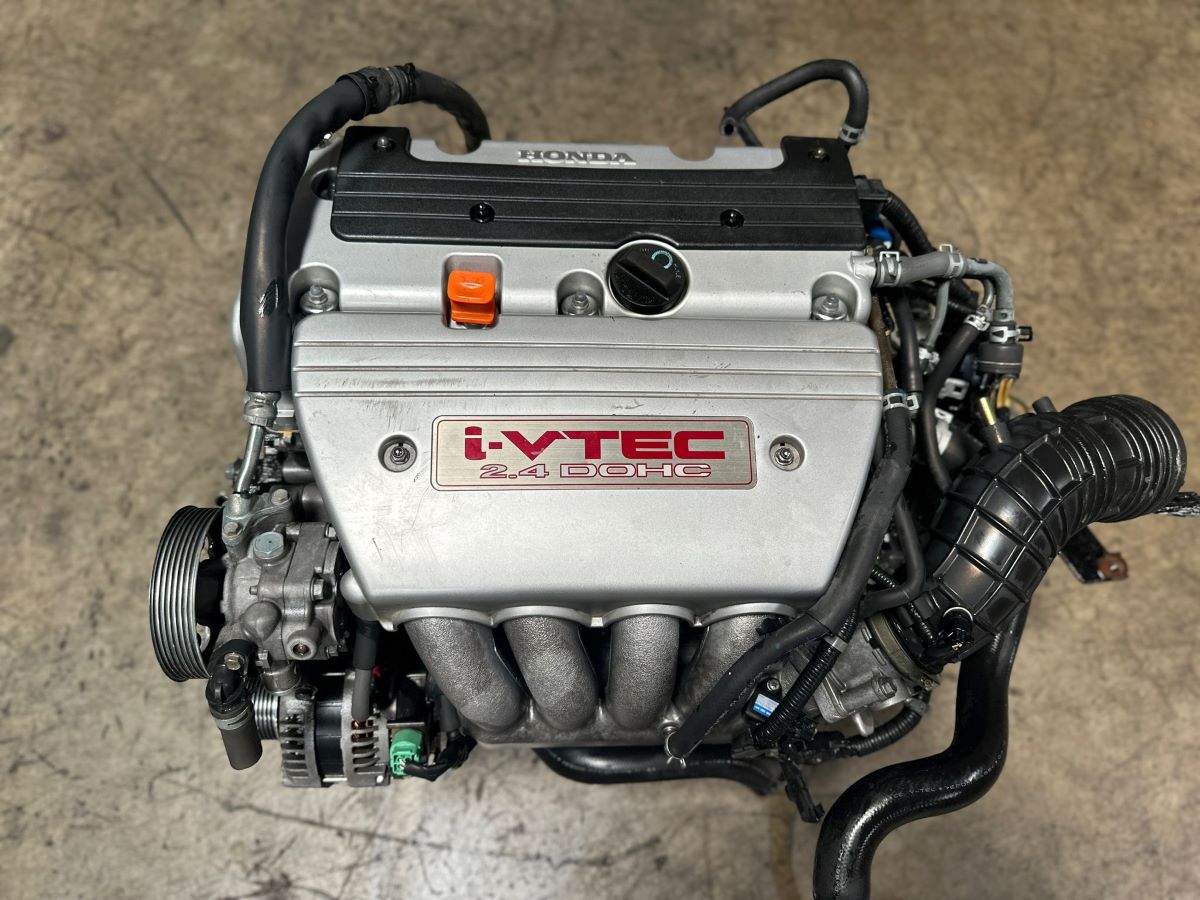
One of the standout features of the K24A2 is its high compression ratio of 10.5:1. This relatively high ratio contributes to better thermal efficiency and enhances the engine’s ability to generate power without sacrificing fuel economy.
In the 2004–2005 Acura TSX models, the engine produces 197 horsepower at 6,800 RPM and 166 lb-ft of torque at 4,500 RPM. In the later 2006–2008 models, horsepower increased slightly to 205 at 7,000 RPM, though torque output remained unchanged at 166 lb-ft at 4,500 RPM.
The K24A2 engine is also noted for its high-revving nature, with a redline set at 7,200 RPM. This generous rev range enables the engine to deliver power smoothly and quickly, making it especially suitable for performance-oriented vehicles and spirited driving conditions.
Another key attribute of the K24A2 is its strong track record for reliability and long-term durability. Built with a robust and well-engineered internal design, the engine is known for operating smoothly with minimal maintenance needs. Its refined construction helps ensure consistent performance over time, even under demanding driving conditions.
Beyond its performance and dependability, the K24A2 also delivers respectable fuel efficiency. This efficiency, combined with its power potential and smooth operation, contributes to its popularity among a wide range of drivers—from tuners and racers to those simply looking for a dependable and enjoyable daily driver.
In conclusion, the Honda K24A2 engine is a well-rounded and versatile powerplant. Its blend of high compression, strong top-end performance, and efficient design make it an excellent choice for various automotive applications and driving preferences. Whether you’re after spirited weekend fun or everyday reliability, the K24A2 offers a compelling package that’s hard to ignore.
VTEC Engines That Wear Out Fast
In this article, we’re cutting through the fanboy noise and taking a close look at the VTEC engines that wear out faster than expected. Whether it’s early-generation K-series motors plagued by oil issues, or overlooked D-series variants that can’t handle abuse, these engines remind us that VTEC alone doesn’t guarantee longevity.
If you’re buying used, building a project, or just curious about which engines to steer clear of — this list will give you the unfiltered truth. Let’s get into it.
1. R18A (Civic 8th Gen Non-Si)
Years: 2006–2011
Displacement: 1.8L i-VTEC
While fuel-efficient, the R18A lacks the overbuilt quality of earlier VTEC engines. Issues with weak piston rings and oil consumption arise after 150,000 miles.
Some owners also report premature timing chain wear. It’s reliable early on but doesn’t age as gracefully as its predecessors.
The R18A belongs to Honda’s R-series engine family and was developed as the successor to the D17 from the earlier D engine lineup. This updated 1.8-liter four-cylinder gasoline engine made its debut in 2006, accompanying the launch of the eighth-generation Honda Civic.
The R18A features a high-rigidity aluminum cylinder block, which benefits from a redesigned lower block construction for added strength.
Within this engine block, Honda incorporated forged, high-strength cracked connecting rods along with a precision-balanced, high-rigidity crankshaft. The engine utilizes low-friction pistons that are coated with molybdenum disulfide in a distinctive polka-dot pattern to reduce wear.
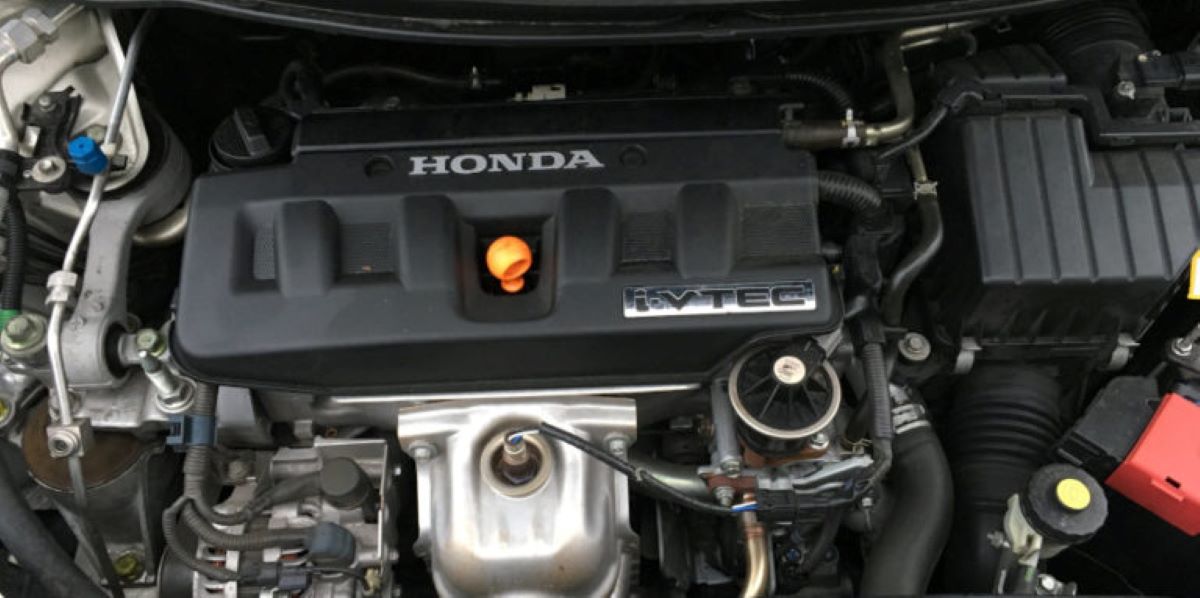
Piston cooling jets have been added to enhance durability by spraying oil directly onto the pistons. Replacing the timing belt used in the D-series, the R18A is equipped with a narrow, quiet-running timing chain for improved longevity and reduced maintenance.
Atop the 1.8L R18 engine is a 16-valve SOHC aluminum cylinder head. This head includes four valves per cylinder—two intake and two exhaust—aluminum rocker arms, and a single camshaft that is chain-driven.
The engine also incorporates Honda’s i-VTEC system, which is short for intelligent Variable Valve Timing and Electronic Lift Control. This system activates at 3,500 rpm and is designed to deliver a combination of high fuel efficiency and strong performance.
Unlike some other engines, the R18A does not feature hydraulic tappets, which means that valve clearance must be manually inspected and adjusted approximately every 25,000 miles (or 40,000 kilometers).
For the intake valves, the clearance specification is 0.18–0.22 mm, while the exhaust valves require a clearance of 0.23–0.27 mm. The intake valves measure 32 mm in diameter, the exhaust valves are 26 mm, and both have a valve stem diameter of 5.5 mm.
2. J35Z2 (Odyssey, Pilot)
Years: 2008–2010
Displacement: 3.5L SOHC VTEC with VCM
This engine uses Honda’s Variable Cylinder Management (VCM), which shuts down cylinders to save fuel.
Unfortunately, this can lead to uneven wear, oil burning, and fouled spark plugs. Many owners complain of excessive oil consumption and eventual cylinder misfire issues after 120,000 miles.
The Honda J35Z2 is a 3.5-liter V6 engine developed and manufactured by Honda, widely recognized for delivering strong performance along with long-term reliability. Introduced in 2008, this engine has powered several Honda and Acura models, including the Honda Accord, Accord Crosstour, Acura RDX, and the Japan-market Honda Inspire.
This article offers a detailed examination of the J35Z2 engine, focusing on its technical specifications, output capabilities, and performance characteristics. Whether you’re considering a vehicle that uses this engine or simply want to learn more about it, the goal here is to provide a comprehensive overview.
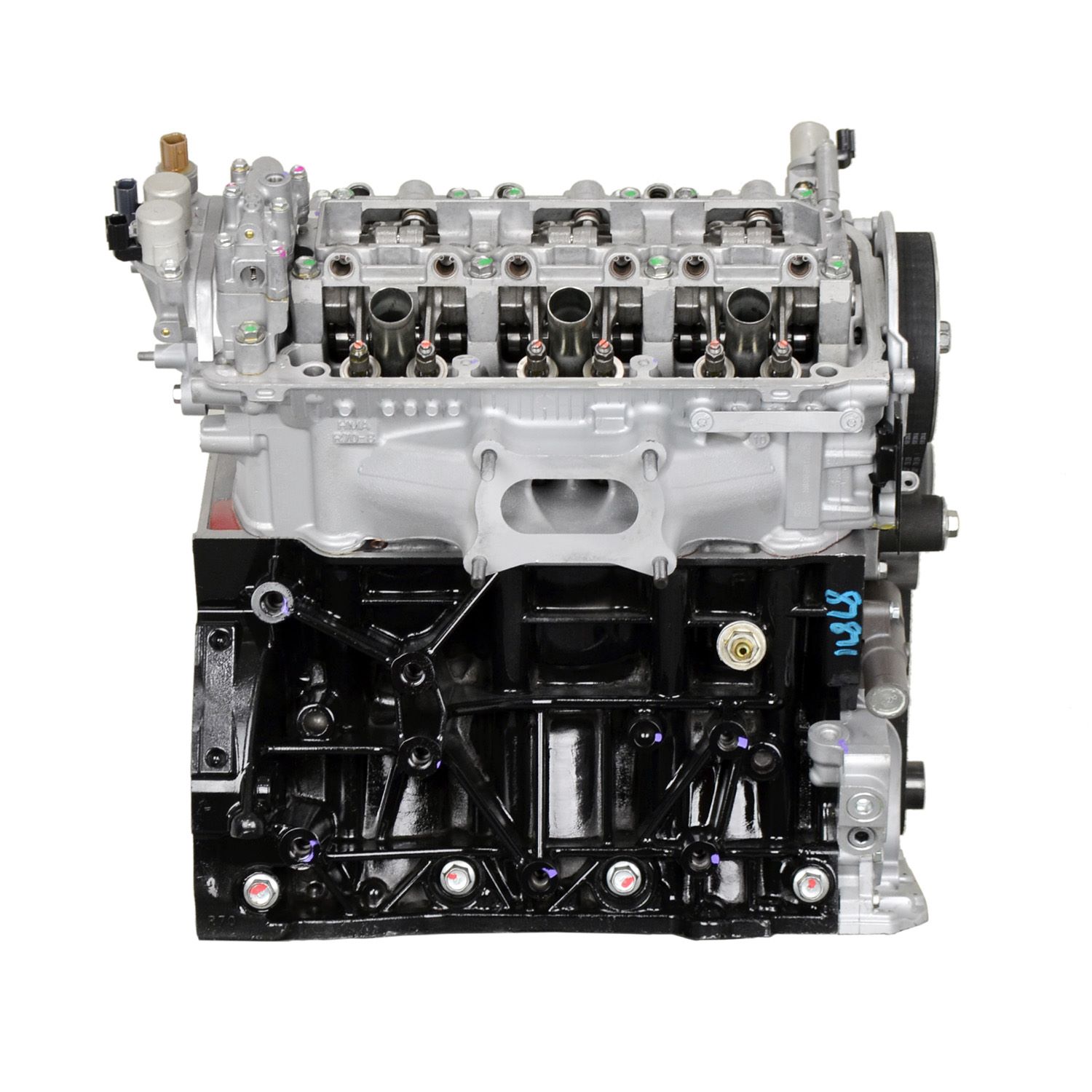
The J35Z2 boasts a displacement of 3.5 liters, or 211.8 cubic inches, with bore and stroke dimensions measuring 89mm by 93mm. The engine operates with a compression ratio of 10.5:1, which plays a key role in maximizing its power output.
In most applications, the engine delivers 268 horsepower at 6,200 RPM and 254 lb-ft of torque at 5,000 RPM. However, in the Acura RDX, the engine produces slightly more power—278 horsepower and 251 lb-ft of torque.
At the core of its design is Honda’s VTEC (Variable Valve Timing and Lift Electronic Control) system, which enhances both performance and fuel efficiency by adjusting valve operation based on engine load and RPM.
The J35Z2 is also equipped with a 24-valve SOHC (Single Overhead Camshaft) valvetrain and Honda’s VCM (Variable Cylinder Management) system. VCM enables the engine to seamlessly switch between three and six active cylinders, depending on driving conditions, in order to conserve fuel and minimize emissions without compromising drivability.
To further refine performance, the engine employs a multi-point fuel injection system that ensures accurate and efficient fuel delivery. The redline for the J35Z2 sits at 6,800 RPM—an impressive figure for a V6 engine—offering ample power across a wide RPM range.
In terms of real-world performance, the J35Z2 has garnered praise for its smooth, confident acceleration and highly responsive throttle behavior. Drivers consistently report a refined and powerful driving experience, with the engine providing both a quiet, comfortable ride and the ability to deliver strong bursts of speed when needed.
Overall, the Honda J35Z2 stands out as a capable and dependable V6 engine that combines strong horsepower and torque with intelligent fuel-saving technologies. Whether you’re in search of a reliable daily driver or a capable highway cruiser, the J35Z2 offers a well-rounded package that suits a variety of driving needs and preferences.
3. D17A1 (Civic 7th Gen)
Years: 2001–2005
Displacement: 1.7L SOHC VTEC
Compared to the robust D16 series, the D17A1 lacks refinement. Common problems include head gasket failure and weak connecting rods.
It also suffers from oil leaks and timing belt issues that can become expensive if neglected. Longevity is questionable past 180,000 miles.
The Honda D17A1 engine is a 1.7-liter inline four-cylinder powerplant developed by Honda and featured in several models of the Honda Civic lineup. Specifically, this engine was used in the 2001–2005 Honda Civic DX, LX, and VP trims.
Honda engineered the D17A1 to strike a solid balance between power, fuel economy, and long-term reliability, which has contributed to its continued popularity among Honda enthusiasts and daily drivers alike.
At the heart of the D17A1 is its 1,668 cc (or 101.8 cubic inches) displacement. The engine features a bore and stroke of 75 mm by 94.4 mm, and a compression ratio of 9.5:1. These figures contribute to the engine’s ability to deliver smooth power while maintaining respectable fuel efficiency.
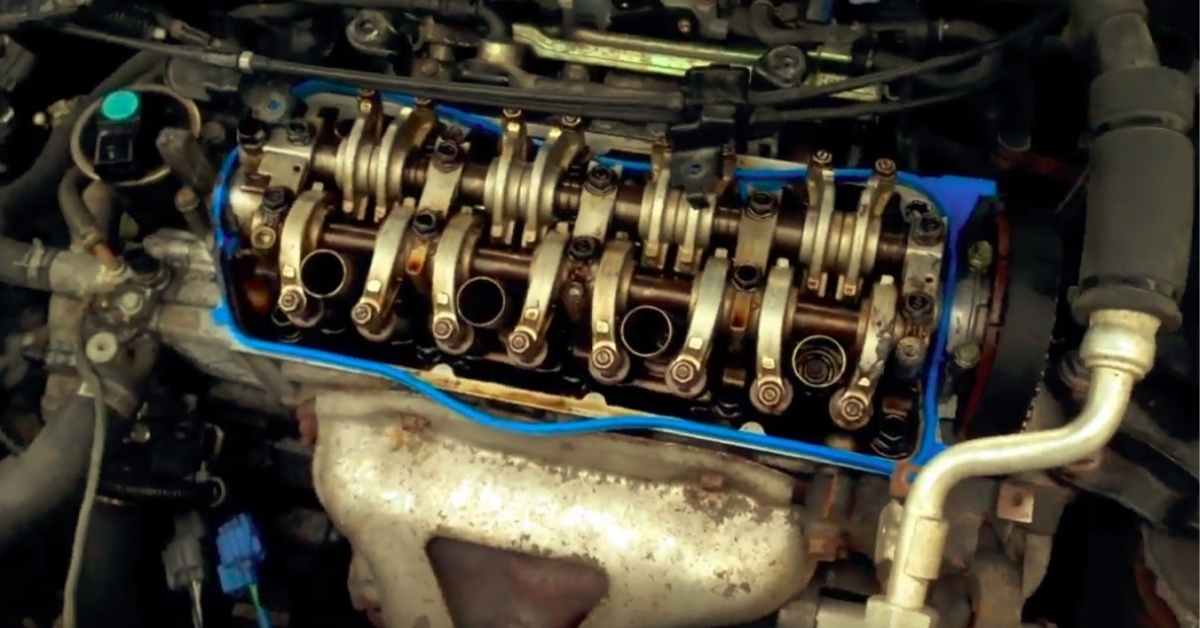
The D17A1 is built with a Single Overhead Camshaft (SOHC) valvetrain setup. This configuration means the engine uses a single camshaft to operate all the intake and exhaust valves.
While it’s mechanically simpler and more compact than a Dual Overhead Cam (DOHC) system, it still provides solid performance. The engine is equipped with four valves per cylinder, which allows for decent airflow and helps ensure efficient combustion and adequate power output.
For fuel delivery, the D17A1 uses an OBD-2 MPFI (Multi-Point Fuel Injection) system. This modern setup uses multiple fuel injectors to deliver precise amounts of fuel directly into the intake manifold, which improves both efficiency and throttle response compared to outdated carburetor systems.
The “OBD-2” component refers to the engine’s second-generation onboard diagnostics system. This makes it easier to detect, diagnose, and resolve engine issues using modern diagnostic tools.
Overall, the D17A1 engine delivers a dependable blend of efficiency and performance, packaged with user-friendly maintenance features. It continues to be a reliable choice for drivers who value a well-rounded engine suited for both urban commuting and long-term ownership.
4. K24Z7 (Civic Si 9th Gen)
Years: 2012–2015
Displacement: 2.4L DOHC i-VTEC
While offering good power, the K24Z7 doesn’t hold up as well as the earlier K20A or K24A2. It’s known for its oil dilution issues, carbon buildup, and premature camshaft wear.

Some users also note less-than-ideal VTEC engagement. Durability tapers off past 150,000 miles.
The ninth-generation Honda Civic comes equipped with a pair of naturally aspirated engines, designed to appeal to both everyday drivers and fuel-efficiency enthusiasts. Leading the lineup is the R18Z1 1.8-liter inline-four gasoline engine, which delivers 140 horsepower and 128 lb-ft of torque in the pre-facelift models.
This power is routed to the front wheels through a five-speed manual transmission, standard on the entry-level DX and mid-tier LX trims. However, buyers also have the option of a five-speed automatic transmission. For those choosing the EX or EX-L trims, the automatic transmission comes as standard with no manual option.
5. J30A4 (Accord V6)
Years: 2003–2007
Displacement: 3.0L SOHC VTEC
Though smooth and refined, the J30A4 suffers from early automatic transmission failures that affect engine health. It also has VTEC solenoid issues and oil leaks as it ages.
These engines typically start burning oil after 130,000 miles, with many requiring top-end rebuilds before 200,000 miles.
The Honda J30A4 engine is a well-regarded powerplant featured in several Honda vehicles. Celebrated for its smooth performance and reliable operation, it has gained popularity among both car enthusiasts and everyday drivers.
This blog post aims to deliver an in-depth overview of the Honda J30A4 engine, diving into its specifications and real-world performance. We’ll explore key areas such as acceleration, power delivery, fuel economy, long-term durability, and reliability.

To give a clearer picture, we’ll also compare the J30A4 to other engines in its category. On top of that, we’ll touch on common issues and routine maintenance requirements to assist potential buyers in making educated decisions.
Whether you’re a seasoned gearhead or someone just starting to understand what powers their vehicle, this article will equip you with all the essential details about the Honda J30A4 engine.
The Honda J30A4 is a 3.0-liter V6 engine introduced in the early 2000s as part of Honda’s J-series engine family—an engine line known for combining performance with fuel efficiency. The J30A4 has been used in multiple Honda models, such as the Odyssey, Pilot, and the Acura TL.
Featuring a square bore and stroke of 86 mm x 86 mm and a compression ratio of 10.5:1, the J30A4 delivers an impressive 247 horsepower and 218 lb-ft of torque. With a redline of 6,800 rpm, the engine showcases Honda’s hallmark smooth revving and responsive powerband.
This engine’s engineering and performance characteristics make it a solid choice for drivers seeking a reliable and capable V6. It delivers brisk acceleration and a refined power curve, while also maintaining respectable fuel economy for its displacement and output.
The J30A4 stands out for its long-term reliability and low-maintenance nature. Its strong internal components and solid build quality contribute to its reputation as a durable engine capable of handling the demands of daily driving without breaking a sweat.
Honda’s VTEC technology is a hallmark of efficiency and performance. While many VTEC engines are legendary for their longevity, a few fall short of Honda’s gold standard due to design compromises or component wear.
The key to long engine life remains regular maintenance, but starting with the right VTEC platform can make all the difference. Choose wisely, and a well-built VTEC engine could outlast the car itself.

